A broken hip is a serious and even life-threatening injury. It affects the upper quarter of the thigh bone (femur) and is more common in older people because their bones tend to be weaker. Effective recovery from hip fracture will normally require follow-up physical therapy that may continue for several months after surgical intervention. For example, you will need customized rehabilitation to help you get back on your feet and regain your independence as soon as possible. But first you need to learn to control the pain and possible symptoms.
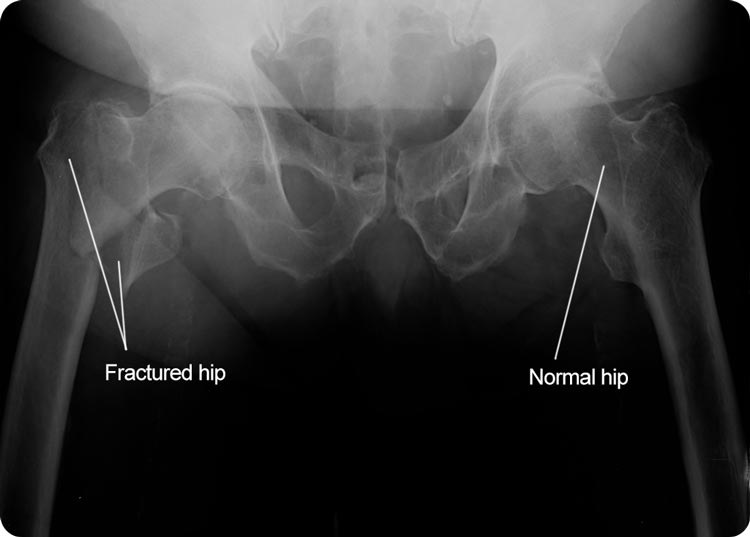
Hip Fracture Recovery: Pain and Symptoms Control
Following surgery, you need to begin moving around as soon as possible for speedy recovery and to reduce the risk of complications. You could be moved from the bed into a chair for a while within the first day after surgery. On the second day, you might begin light exercises. And then progress to getting into and out of a chair, walking and going up and down the stairs under the assistance and supervision of a physical therapist.
You will remain in hospital for 2-4 days following surgery and may need to be moved to a rehabilitation center before going home. At the rehab, you will be inducted into daily activities such as bathing. It is normal to use a walking aid such as a walker, crutches or a cane for several months and full recovery will take about one year. During follow-up appointments, your doctor will check the wound, remove the sutures and monitor the healing process using X-rays. Here are some concrete things to do after the surgery.
1. Pain Management
Pain is part of the healing process following injury and surgery. Your doctor may prescribe one or a combination of medications for relief of pain. Medications for pain management include non-steroidal anti-inflammatory drugs (NSAIDs), opioids and local anesthetics. But your doctor will in most instances avoid the use of opioids, because they are addictive narcotics.
2. Medical Care
In some instances, blood transfusion is required in hip fracture recovery. Long-term antibiotic use is usually not necessary. You may be placed on blood thinning medication for up to six weeks. This will reduce the risk of blood clots. Compression stocking or inflatable boots may also be recommended to prevent blood clots.
3. Rest
It is important to rest the affected hip following surgery. Avoid movement or activities if they amplify your pain. While walking, use walking aids as recommended and put no more weight on your leg. The objective is to keep pain and symptoms at a minimum and to promote healing.
4. Application of Heat
Heat causes blood vessels to dilate or expand. This helps to increase blood flow to the area, flushing away pain-causing chemicals and bringing in healing supporting nutrients and oxygen. The effective kind of heat is supplied by moist hot packs, heating pads, warm bath or warm shower. Apply the heat for 15-20 minutes, three to four times a day.
5. Ice Treatment
Ice constricts blood vessels, an opposite effect to that of heat. This decreases the flow of blood, controlling inflammation and reducing pain during your hip fracture recovery period. You can do ice treatment at home using ice packs or ice bags. You can also place a wet towel on the sore area and then place the ice container over the towel and leave it on for 10-15 minutes, three to four times daily.
6. Electrical Stimulation
Mild electrical current passed through the skin of the sore area can reduce pain and swelling. The electrical current works by replacing the pain impulses. This way, your muscles relax and pain dissipates. This treatment is provided through electrode pads placed on the skin of the sore area for 10-15 minutes. Electrical stimulation may feel like gentle massage.
Hip Fracture Rehabilitation Exercises
Rehabilitation exercises can greatly accelerate your recovery process. Keep in the mind the helpful tips before exercises.
- Do the exercises two or three times every day and 10-20 repetitions each time.
- Don’t rush through the exercises, but follow a slow, steady sequence.
- Take slow, deep breathes when exercising.
- Follow a consistent schedule and pick a place for exercising where you have everything you need for the exercises.
- Avoid squatting or kneeling until your doctor allows it.
- Avoid bending beyond 90 degrees while your hip is healing, until your doctor allows it.
1. Ankle Pumps
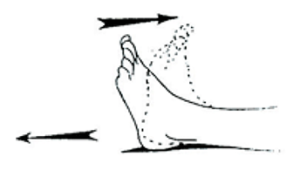 While lying on a mat, stretch your foot forward as far as possible.
While lying on a mat, stretch your foot forward as far as possible.- Move it back in the opposite direction as far as possible.
- Feel your calf muscles working.
2. Quad Sets
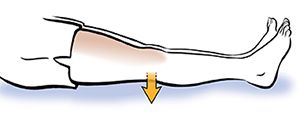 Lie on your back and press your knee down.
Lie on your back and press your knee down.- Hold this for 4 to 5 seconds and then release.
- Feel the muscles on the front of your thigh working.
3. Gluteal Sets
 Lie down on your back and squeeze your buttocks muscles for 4 to 5 seconds.
Lie down on your back and squeeze your buttocks muscles for 4 to 5 seconds.- Release and repeat 10 to 20 times.
4. Heel Slides

- Lie on your back and bring the heel of your foot towards the buttock.
- Move the heel back to its starting position.
5. Short Arc Quads
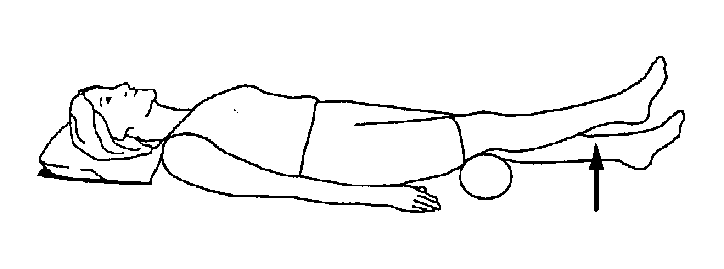
- Keep your thigh on the towel.
- Straighten the knee by lifting your foot.
- Bring down your foot.
6. Abduction and Adduction
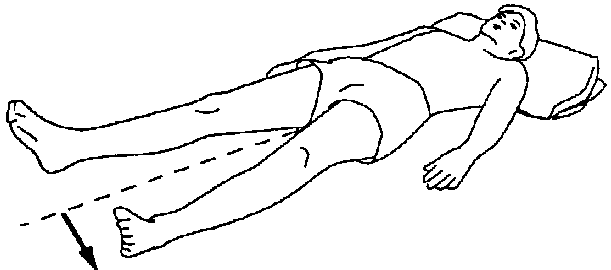
- Lie on your back, legs together.
- Gently move your operated leg out towards the side.
- Keep the knee straight and toes pointing upwards.
- Resume the original position.
- Move your good leg out towards the side.
- Resume the original position.
7. Long Arc Quads

- Sit in a chair, with your back straight and feet on the floor.
- Lift your lower leg so that the whole leg is parallel to the floor.
- Hold this pose for a few seconds.
- Return your leg to original position.
8. Ankle Dorsiflexion-Plantar Flexion
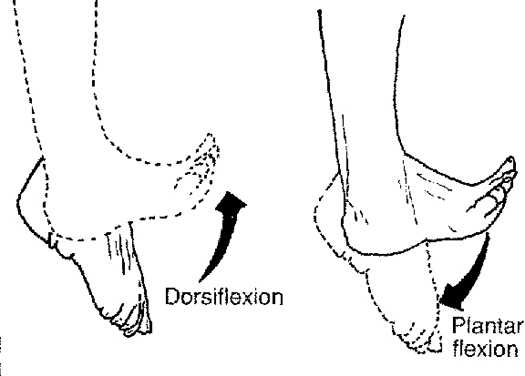 Stand and hold onto the back of a chair or other firm frame.
Stand and hold onto the back of a chair or other firm frame.- Lift the front of your feet so that you are on your heels.
- Return feet to the original position.
- Lift your heels so that you are on your toes.
- Return to the original position.
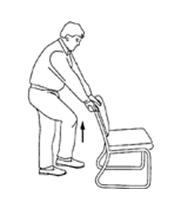 9. Hip Flexion
9. Hip Flexion
- Stand and hold onto the back of a chair or other firm frame.
- March in place, lifting your knee so that your thigh is parallel to the floor.
- Change to the other leg.
Hip Fracture Recovery Precautions
Your doctor will give directions on how much weight your operated hip can bear. Follow these directions for fast recovery. Your doctor or therapist may also spell out some dos and don'ts in daily life, including:
DON'T Bend Your Hip Beyond 90 Degrees
- Don't bend forward towards your feet, for example to pick up something
- Don't lift your knee above your hip when sitting.
- Always sit on a firm chair with good support for your foot and leg.
DON'T Twist Your Body
- Don't reach out across your body, but instead, arrange things so that you can easily reach them by one or the other hand.
- When walking, do it in small steps especially when turning.
- Keep your shoulders and hips aligned and avoid twisting your legs either inwards or outwards.
DON'T Cross Your Legs or Ankles
- This may lead to dislocation of your hip.
- Always put a pillow between your legs when you lie on your side.
